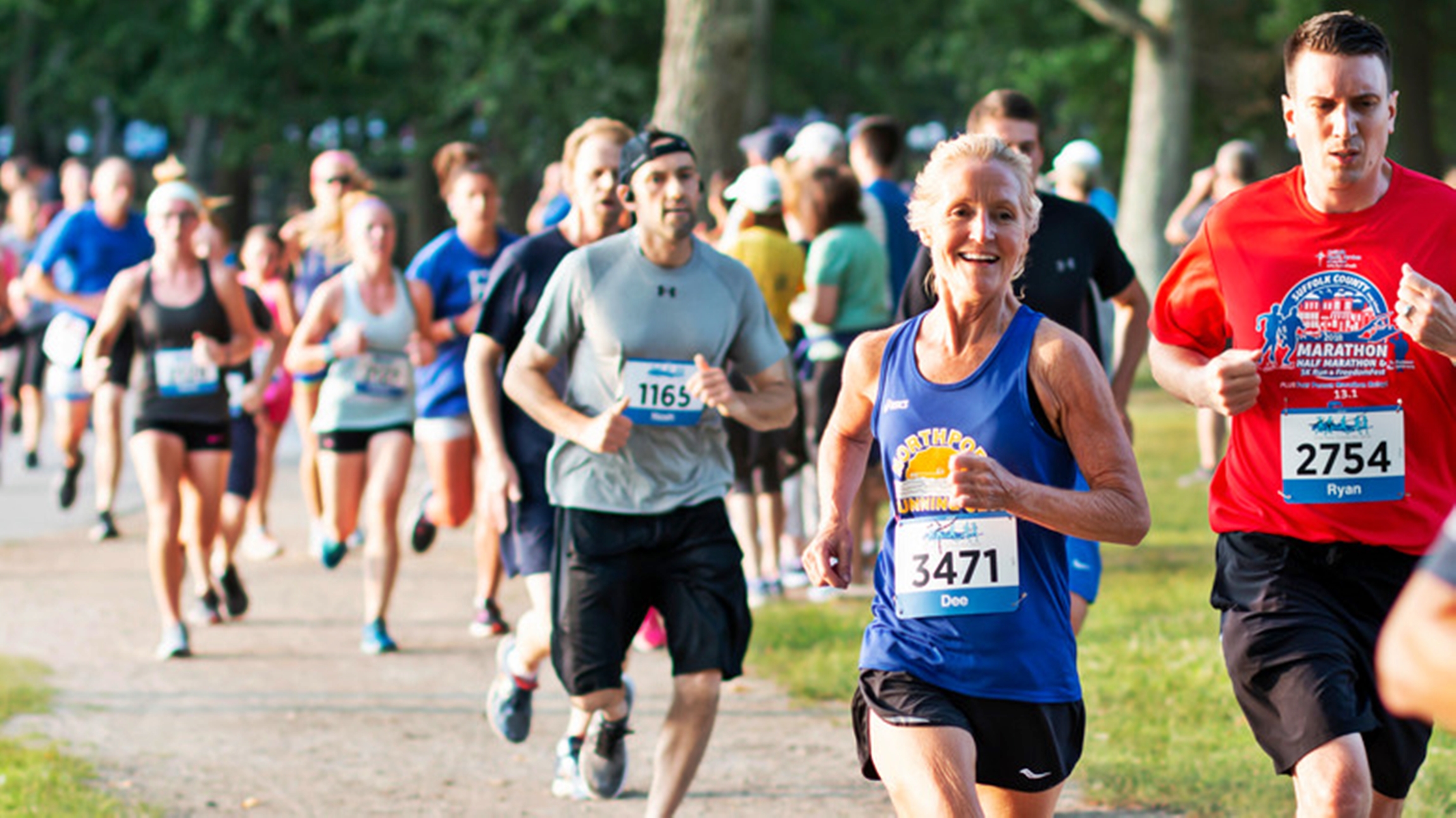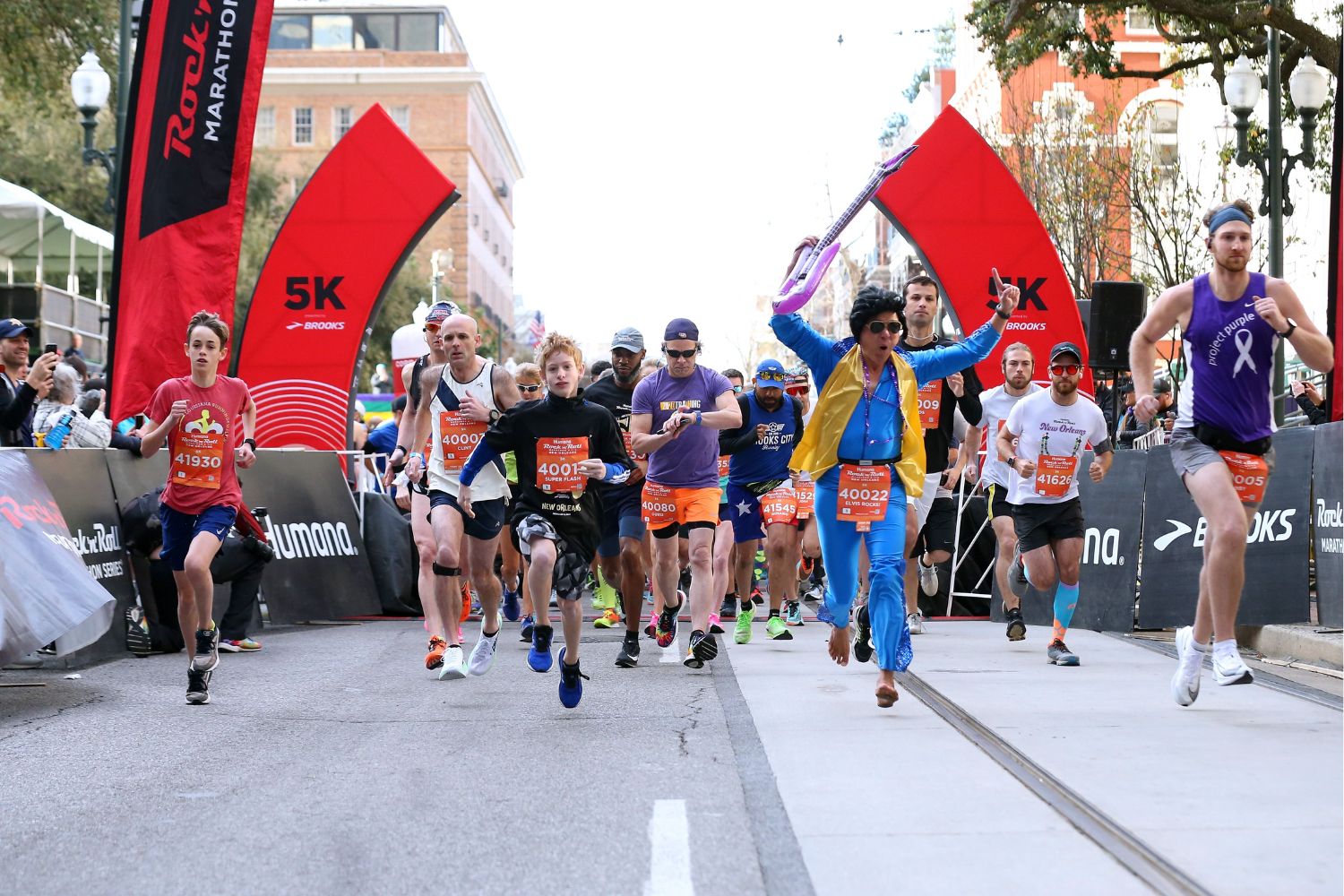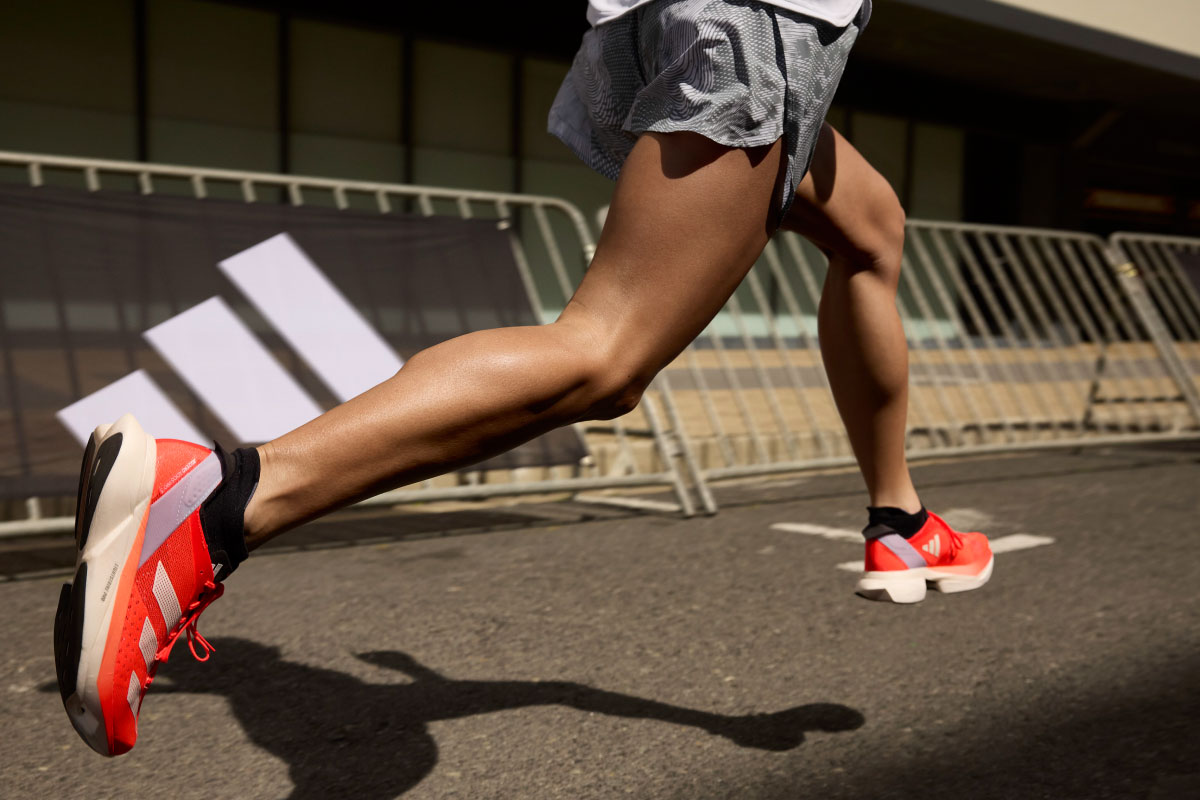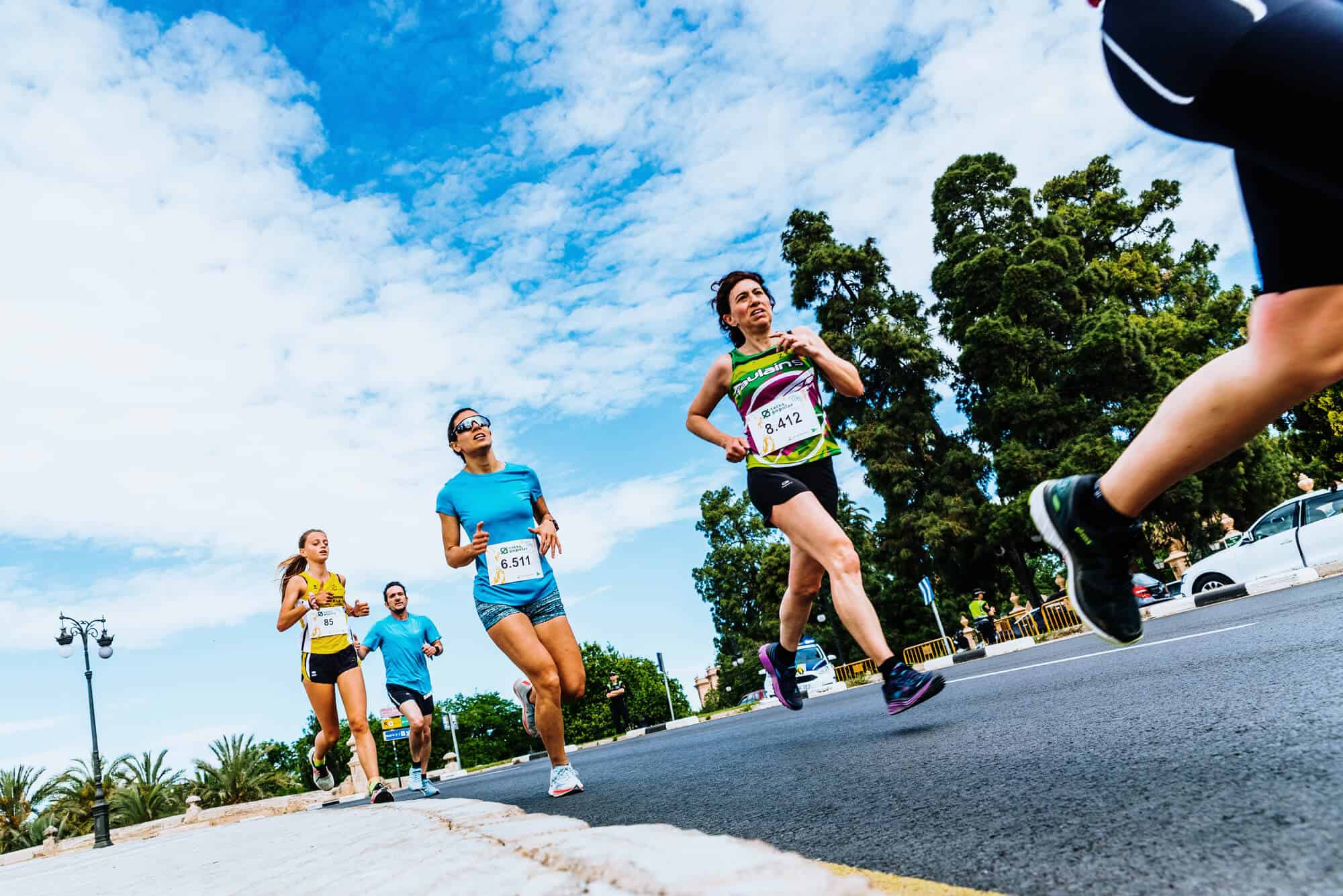

Featured
What Is A Good Time For A 5K Run?
Modified: January 2, 2024
Discover when is the ideal time for a 5K run. Get featured advice from fitness experts and optimize your training schedule for maximum performance.
Introduction
A 5K run, also known as a 5-kilometer run, is a popular distance for both casual and competitive runners. It involves covering a distance of 5 kilometers or approximately 3.1 miles. Whether you are a seasoned runner or just starting your fitness journey, participating in a 5K run can be a great way to challenge yourself and enjoy the camaraderie of a running community.
One common question among runners is, “What is a good time for a 5K run?” The answer to this question varies depending on a variety of factors, including age, fitness level, and running experience. Understanding these factors can help you set realistic goals and track your progress as you work towards improving your 5K run time.
In this article, we will explore the factors that affect 5K run times and discuss what can be considered as an average time for a 5K. We will also provide tips on how to set a personal goal time and offer training strategies to help you improve your 5K run time. So, whether you’re a beginner or a seasoned runner, let’s dive in and discover what it takes to achieve a good time for a 5K run!
Understanding 5K Runs
A 5K run is a race that covers a distance of 5 kilometers or approximately 3.1 miles. It is a popular event in the running community and appeals to all levels of runners, from beginners to elite athletes. The distance of a 5K run is achievable for most people, making it a great starting point for new runners or those who want to improve their fitness level.
One of the key features of a 5K run is its versatility. It can be held on roads, trails, or even on a treadmill. This allows runners to participate in organized races or set their own personal challenges in their preferred environment. Some 5K runs are also organized for charitable causes, adding another element of community and social impact.
5K runs are known for their friendly and inclusive atmosphere. Participants of all ages and abilities can take part, from children to seniors. Many races offer various categories such as age groups or divisions based on gender, allowing runners to compete against others with similar characteristics.
In terms of pacing, a 5K run usually requires a combination of speed and endurance. Runners need to find a balance between maintaining a consistent pace and pushing themselves to finish strong. This makes it a great opportunity for runners to work on their speed and endurance, as well as their overall race strategy.
Whether you are running a 5K for fun, to challenge yourself, or to compete against others, understanding the dynamics of this distance is important. By knowing what to expect and how to approach the race, you can make the most of your 5K experience and set yourself up for success.
Factors Affecting 5K Run Times
When it comes to 5K run times, there are several key factors that can influence your performance. Understanding these factors can help you set realistic goals and make informed decisions about your training and race strategy. Here are some of the main factors that affect 5K run times:
- Fitness Level: Your overall fitness level plays a significant role in determining your 5K run time. The more physically fit you are, the easier it will be to maintain a faster pace throughout the race. Regular exercise, including running and other cardiovascular activities, can help improve your fitness level.
- Training and Preparation: The amount and quality of training leading up to a 5K run can greatly impact your performance. Consistent and structured training, including a mix of endurance runs, speed workouts, and rest days, can help you build the necessary strength and stamina to run at a faster pace.
- Course Terrain: The terrain of the race course can have a significant impact on your 5K run time. Running on a flat and smooth surface, such as a paved road, can generally result in faster times compared to a hilly or challenging trail. Be aware of the course elevation and terrain characteristics when setting your goals.
- Weather Conditions: Weather conditions, such as temperature, humidity, and wind, can affect your performance on race day. Extreme heat or cold can make it more challenging to maintain a desired pace, while strong winds can create resistance. Check the weather forecast and adjust your expectations accordingly.
- Mental Outlook: Your mental state and attitude towards the race can impact your performance. Maintaining a positive mindset, staying focused, and managing any pre-race nerves can help you stay motivated and push through discomfort during the run.
- Race Strategy: Having a well-thought-out race strategy can make a significant difference in your 5K run time. This includes considerations such as pacing, when to push or conserve energy, and how to approach hills or challenging sections of the course. Develop a race plan that aligns with your abilities and goals.
It’s important to remember that everyone is different, and these factors will impact individuals in varying ways. Identifying how these factors specifically affect you and adapting your approach accordingly can lead to improved 5K run times.
Average 5K Run Times
When it comes to determining what can be considered as an average 5K run time, it’s important to keep in mind that it varies greatly depending on factors such as age, gender, and running experience. However, we can provide a general range of average 5K run times to give you an idea.
For male runners, the average 5K run time is typically between 20 minutes to 25 minutes. This equates to an average pace of around 6 to 8 minutes per mile. However, it’s essential to note that these are just averages and can vary significantly based on individual fitness levels and other factors mentioned earlier.
For female runners, the average 5K run time is generally between 25 minutes to 30 minutes, with an average pace of approximately 8 to 9.5 minutes per mile. Again, these numbers are just averages, and individual performance can vary widely.
It’s important to remember that the concept of an “average” time should not discourage or limit you. Whether you finish a 5K in 15 minutes or 45 minutes, what matters most is the progress you make and the effort you put into achieving your personal goals.
As mentioned earlier, age also plays a role in average 5K run times. Younger runners generally have faster average times compared to older runners due to greater physical capabilities and training opportunities. However, this doesn’t mean that older runners cannot achieve impressive 5K times. Many older runners continue to excel and set new personal records.
One way to gauge your performance relative to others is by participating in organized races. Race results often provide overall and age group rankings, allowing you to compare your time with other participants in your category. Keep in mind that the primary focus should always be on personal improvement and enjoyment rather than comparing yourself to others.
Overall, average 5K run times can serve as a useful benchmark, but individual goals and progress are what truly matter. Set realistic and achievable goals based on your own abilities, and celebrate your accomplishments along the way.
Setting a Personal Goal Time
Setting a personal goal time for a 5K run is a great way to stay motivated and focused during your training. Whether you’re aiming to beat your previous record, achieve a specific time milestone, or simply finish the race within a certain timeframe, having a goal can provide a sense of purpose and drive.
When setting a personal goal time, it’s important to make it realistic and achievable based on your current fitness level and running experience. Here are a few strategies to help you set an effective personal goal time:
- Evaluate Your Current Abilities: Take an honest assessment of your current running abilities and recent race times. Consider factors such as your average pace, endurance level, and recent improvements. This will give you a starting point for setting a goal time.
- Consider Incremental Improvements: It’s often more realistic and sustainable to aim for gradual improvements rather than setting overly ambitious goals. Consider setting a goal time that is slightly faster than your current race times, allowing room for progress while ensuring it remains attainable.
- Break It Down: Instead of focusing solely on the final 5K time, break it down into smaller milestones. For example, aim to complete each mile within a specific time range. This approach can provide more manageable targets and help you stay motivated throughout the race.
- Account for External Factors: Keep in mind that external factors such as weather conditions, course difficulty, and personal circumstances can impact your race time. Adjust your goal time accordingly to account for these variables and set a more realistic target.
- Stay Flexible: While it’s essential to have a goal time, it’s equally important to remain flexible and adjust it if necessary. Injuries, illness, or unforeseen circumstances may arise during your training period. Be prepared to adapt your goal time as needed without becoming discouraged or feeling defeated.
Remember, setting a personal goal time is about challenging yourself while maintaining a healthy and enjoyable running experience. It’s not solely about the numbers on the clock, but also about the progress you make and the joy of reaching personal milestones. Along the way, celebrate every step, no matter how small, and use your goal time as a guide to push yourself further and discover your full potential as a runner.
Training Tips for Improving 5K Run Times
If you’re aiming to improve your 5K run time, incorporating effective training strategies into your routine is essential. Here are some training tips to help you become a faster and more efficient runner:
- Establish a Consistent Training Schedule: Consistency is key when it comes to improving your 5K run time. Create a training schedule that includes a mix of endurance runs, speed workouts, and rest days. Stick to this schedule to build stamina, speed, and prevent overtraining.
- Incorporate Interval Training: Interval training involves alternating between periods of high-intensity effort and recovery. This type of workout helps improve both speed and endurance. Example workouts include running at a faster pace for a specific distance or time, followed by a slower recovery jog.
- Run Hills: Hills provide an excellent opportunity to build strength and improve overall speed. Incorporate hill workouts into your training routine by finding hilly routes or using a treadmill with an incline. Focus on maintaining good form and pushing yourself up the hills.
- Include Tempo Runs: Tempo runs involve running at a comfortably hard pace for a sustained period. This helps improve your lactate threshold, allowing you to maintain a faster pace for a longer time. Start with shorter tempo runs and gradually increase the duration as your fitness improves.
- Don’t Neglect Strength Training: Strength training is often overlooked by runners, but it can have a significant impact on your performance. Incorporate exercises that target your lower body, core, and upper body to improve overall strength and stability.
- Practice Good Running Form: Proper running form can help you become a more efficient runner, ultimately improving your speed. Focus on maintaining an upright posture, relaxed shoulders, and a slight forward lean. Strive for a midfoot strike and engage your arms for added momentum.
- Include Rest and Recovery: Rest and recovery days are just as important as training days. Allow your body time to repair and adapt to the training stress. Get enough sleep, eat nutritious food, and listen to your body to prevent overtraining and reduce the risk of injury.
- Track Your Progress: Keep a training journal or use a running app to track your progress. Record your training runs, times, and any notable observations. This allows you to identify patterns, track improvements, and make adjustments to your training plan as needed.
- Stay Motivated and Enjoy the Journey: Improving your 5K run time takes time and dedication. Stay motivated by setting smaller goals, celebrating milestones, and participating in local races or virtual running events. Remember to enjoy the process and celebrate the progress you make along the way.
By incorporating these training tips into your routine and staying committed to your goals, you can enhance your performance and achieve your desired 5K run time. Take a gradual and consistent approach, and always listen to your body to prevent overtraining and injury. With time and effort, you’ll see improvements and feel stronger as a runner.
Conclusion
Participating in a 5K run can be an exhilarating and rewarding experience. Whether you’re a beginner or a seasoned runner, understanding the factors that affect 5K run times and implementing effective training strategies can help you achieve your goals and improve your performance.
From evaluating your current abilities to setting realistic personal goal times, each step in the process is crucial. Remember that average 5K run times can serve as a benchmark but should not limit your potential or discourage your progress. Focus on your own journey and celebrate your personal milestones along the way.
Training smart and incorporating a balanced mix of endurance runs, speed workouts, strength training, and rest days will help you become a faster and more efficient runner. Pay attention to your form, listen to your body, and make adjustments as needed to prevent overtraining and reduce the risk of injury.
Lastly, stay motivated and enjoy the journey. Running is not just about achieving a specific time; it’s about challenging yourself, pushing your limits, and embracing the joy of running. Celebrate every step, whether it’s a personal best or simply completing a race, and use those experiences to fuel your ongoing passion for running.
So, lace up your running shoes, set your personal goals, and embark on the journey to improve your 5K run time. With dedication, patience, and a positive mindset, you’ll be amazed at what you can achieve.








